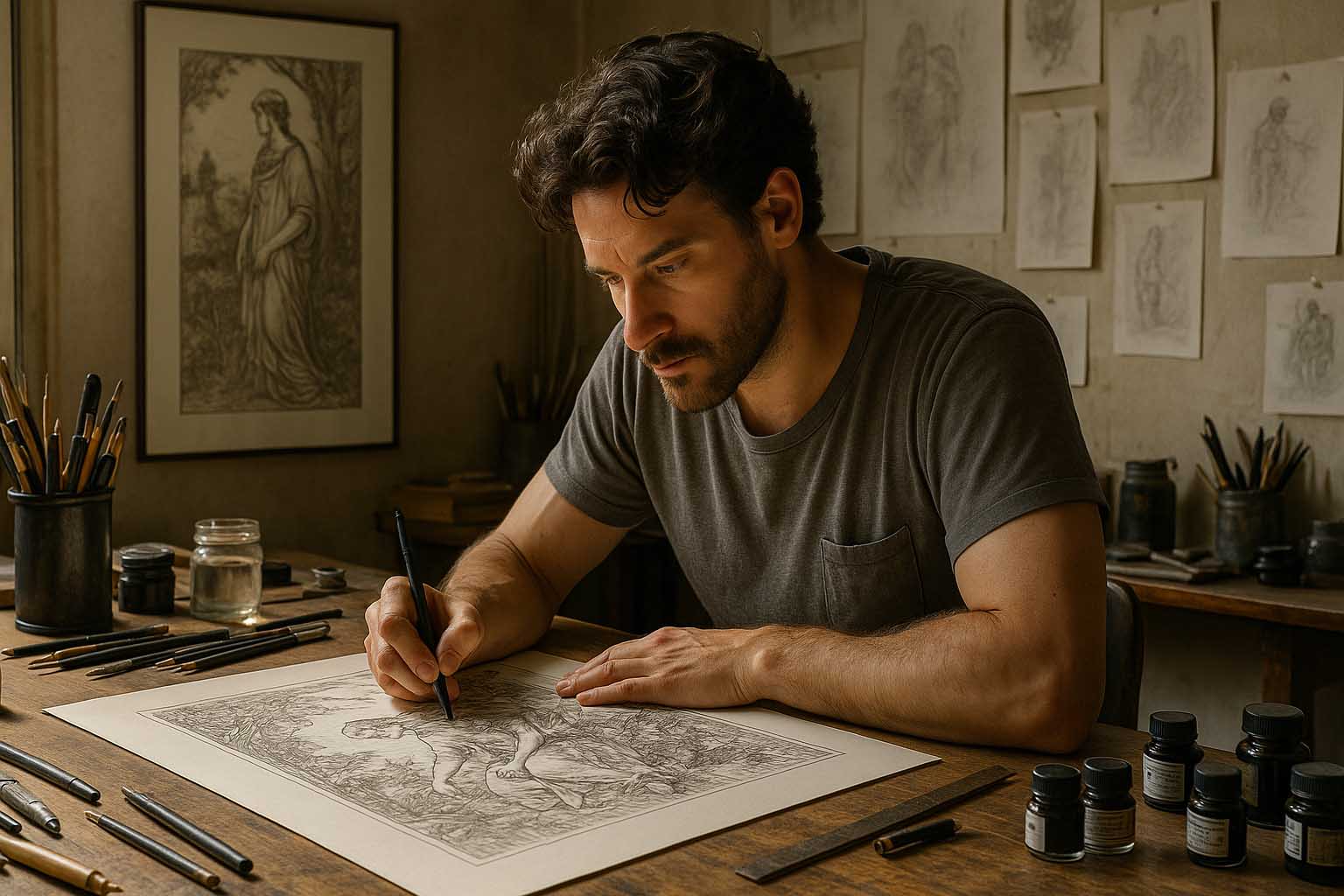
New Wave of Illustration: How Illustrators Are Thriving in Small Galleries Worldwide
Just over a decade ago, illustrators were typically found within the pages of books, magazines, or ad campaigns. Today, the scene is shifting. Images once confined to print are now centerpieces on the walls of small galleries around the globe. From the chilly fjords of Ålesund to the historic streets of Bath, illustrators are bringing fresh energy to local art. This success offers one simple truth: art becomes more accessible—not only in grand museums but in quiet corners of modest towns.
- Local Community Access: Small galleries open doors to fresh voices, giving residents the chance to witness global talent without traveling far.
- A New Art Economy: Illustrations bring income through merchandise, prints, and workshops—critical for underfunded spaces.
- Global Reach: Through social media and online art fairs, small galleries now connect with collectors from Reykjavík to Wellington.
Rising Gallery Culture in Smaller Towns
Many critics argue that cities remain the heart of art. Yet growing evidence suggests real innovation often begins in more intimate places. Take the village of Brønnøysund, where Arctic Brush opened its doors with a layout more like a neighbor’s living room. Featuring fifty original pieces on northern life, the gallery sold nearly 300 archival prints within two months. Similar models are now emerging in Colmar, Girona, and Prince Edward County.
One advantage of smaller spaces is agility. With fewer staff and lower costs, curators can take bold steps. If a new illustrator from Oaxaca creates on brightly dyed amate paper, that piece might be hanging on the wall within a week. This quick turnaround makes each visit a fresh experience.
Why Illustration Shines as a Main Artwork
Illustration is easy to approach. Visitors don’t need formal training to feel the emotion in a frame. One glance is often enough. In a gallery in Murakami-cho, a visitor might notice the movement and emotion in the drawings—often more raw and expressive than traditional painting.
Why is this art form becoming so popular in smaller towns?
Stories in Every Stroke – Both the young and old can connect to the narrative of a drawing more easily than with abstract works.
Cost and Accessibility – Compared to large canvases, framing and transport for illustrations are more affordable. First-time buyers feel more comfortable making a purchase.
Reproduction Value – Galleries can offer limited edition giclée prints, allowing fans from distant places to collect without hefty shipping costs.
International Examples of Illustration Flourishing
Hudson, New York: Modern Folk Themes
Known for its indie bookstores, Hudson is now a hotspot for illustrators. The Circle Square Gallery recently showcased Marisol Quiroz’s work on urban myths of the Catskills. Using gouache and cut-paper, all twelve originals sold within three days. Her exhibit led to monthly zine-making workshops.
Ålesund, Norway: Arctic Brush’s Influence
Arctic Brush gained traction after a Nordic magazine featured their winter show. One highlight: Ola Strand’s sea-monster sketches. With cruise ship tourists passing through, his printed pouches became popular souvenirs. Visitor traffic increased by 60% over the previous year.
Tasmania, Australia: Eco-Inspired Work
In Devonport, a warehouse turned gallery called Island Ink Collective displayed illustrations made with eco-dyes from berries and leaves. Eco-conscious travelers flocked in. The gallery even partnered with a local café for brunch events inspired by the exhibit.
Community Connection and Engagement
Small galleries do more than sell art. They build relationships. Here’s how many connect with their neighborhoods:
Monthly Art Walks: Held every last Friday, featuring free tea and music to draw in families.
Workshops for Youth: Affordable classes on water-based ink techniques, with proceeds going toward exhibition upkeep.
Resident Illustrator Program: Artists stay for 3–4 weeks, often housed by local families, deepening cultural exchange.
These efforts focus less on sales and more on building bonds that last beyond the final day of the show.
Sales Through Mixed Channels
Online tools are essential for small galleries. When an artwork doesn’t sell in person, digital platforms offer a second chance. Some of the most commonly used tools include:
A Shopify site with multilingual options, accepting currencies like yen, euro, and pound.
Print-on-demand services for items like posters, notebook covers, or cushions—artists earn from each piece.
A 360-degree virtual studio tour, allowing buyers in São Paulo or Berlin to experience the space remotely.
Combining offline and online methods helps these galleries reach broader audiences that might otherwise remain untapped.
The Value of Narrative in Illustration
People connect deeply with visual storytelling. A drawing of a lantern-lit night market in Hoi An becomes more than colorful decor. It reflects a family’s teamwork, trade history, and the mist touching the Thu Bồn River. That emotional link turns casual observers into cultural supporters. These images become bridges between memory, heritage, and modern art.
Challenges and How They’re Managed
There are hurdles, of course. Limited funds. Smaller customer bases. Shipping logistics—how do you safely deliver a framed piece from Viljandi to Buenos Aires?
Here’s what some curators have done:
Pre-order Models: Reduces the risk of unsold inventory.
Honeycomb Cardboard Crates: Lighter and cheaper than traditional wood, yet durable.
Partnership with Local Airlines: Discounts on cargo when transporting art.
These solutions keep galleries functional, despite tight budgets and niche markets.
Tech as a Practical Ally
Being tech-savvy doesn’t mean huge investments. Some galleries use simple tablets by the entrance. Visitors press the flag of their home country. At month’s end, the gallery sees which continents their audience came from—and prepares language guides accordingly.
Others incorporate AR filters. For instance, pointing a camera at Sofia Karev’s “Moonlit Garden” reveals animated glowing flowers. No massive spend needed—a freelancer from Riga built the filter in two days.
Suggestions for Curators and Illustrators
For Curators
Choose exhibits that reflect the town’s own story. Local relevance draws stronger engagement.
Host opening nights with live sketch sessions. They’re affordable and attract attention.
Partner with nearby cafés or bookstores for event promotions.
For Illustrators
Use archival-quality paper for durability, especially in cold or humid areas.
Prepare high-resolution files (600 dpi) for quick reprints if needed.
Keep your digital portfolio current—if a piece goes viral, new markets will take notice.
Why This Movement Matters
The rise of illustration in small galleries reflects creative strength in unexpected places. Big budgets and fame aren’t required for art to be felt. All that’s needed is a space that welcomes new voices—and a community willing to engage. This wave of creativity continues to thrive, coloring the walls of small towns with joy, hope, and shared meaning. Through each stroke, illustrators show how art can build deeper connections, one image at a time.

